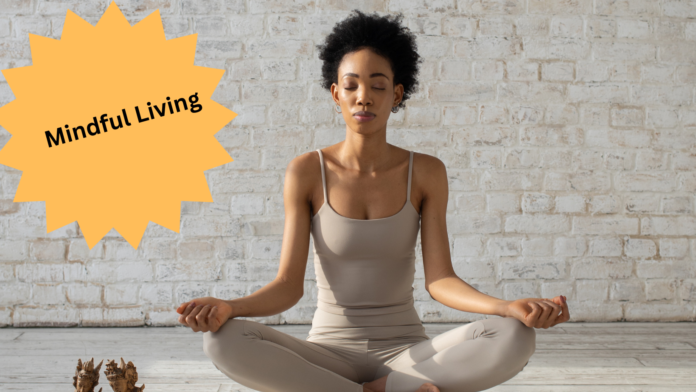Last Updated on October 19, 2023 by Fatima Alih
The Art of Mindful Living: A Practical Guide
Living in today’s fast-paced world can be overwhelming. We’re constantly bombarded with information and distractions, making it challenging to find a sense of inner peace and balance. That’s where the art of mindful living comes in. In this comprehensive guide, we’ll explore the principles of mindfulness and provide practical tips on how to incorporate them into your daily life. Let’s embark on a journey to a more peaceful and fulfilling existence.
What is Mindful Living?
Mindful living is the practice of being fully present and engaged in the moment, without judgment. It’s about embracing the now and appreciating each experience as it unfolds. This ancient concept has gained popularity in recent years, and for good reason.
Why Mindful Living Matters
In today’s hectic world, stress and anxiety are prevalent. Mindful living offers numerous benefits, such as:
Reduced Stress: Mindfulness helps you manage stress by keeping your focus on the present moment.
Improved Mental Health: It can alleviate symptoms of anxiety and depression.
Enhanced Well-Being: Mindfulness is linked to increased happiness and satisfaction.
Better Relationships: It fosters better communication and empathy.
Increased Productivity: Being present in your work can lead to improved efficiency.
Getting Started with Mindful Living
So, how can you integrate mindfulness into your life? Here are some practical steps:
1. Mindful Breathing
Start with simple, mindful breathing exercises. Take a few minutes each day to focus on your breath. Inhale deeply, exhale slowly, and pay attention to the sensation of your breath. This can be done anywhere, anytime.
2. Mindful Eating
Next time you eat, put away distractions and savor every bite. Pay attention to the flavors, textures, and smells of your food. This helps you appreciate the nourishment you receive.
3. Mindful Walking
Take a walk in nature and focus on each step you take. Feel the ground beneath your feet and listen to the sounds around you. It’s a great way to reconnect with the world.
4. Mindful Meditation
Consider incorporating meditation into your routine. Even just a few minutes a day can make a significant difference in your mindfulness journey.
Mindful Living in the Digital Age
Our digital devices can be a major source of distraction. Here are some tips to maintain mindfulness in the digital age:
1. Digital Detox
Regularly take breaks from your screens. Unplug and enjoy some screen-free time.
2. Mindful Social Media Use
When using social media, be conscious of your time. Avoid mindless scrolling and set time limits for your online activities.
3. Tech-Free Zones
Create designated tech-free zones in your home, like the bedroom or dining area, to foster mindful interactions with your loved ones.
Mindful Living Beyond the Self
Mindful living doesn’t stop at personal well-being. It can extend to your relationships and the world around you. Practicing kindness, compassion, and empathy can improve your interactions with others and contribute to a more harmonious society.
Conclusion
In a world filled with chaos and distractions, the art of mindful living offers a path to inner peace and contentment. By embracing the present moment and practicing mindfulness in various aspects of your life, you can reduce stress, enhance your well-being, and strengthen your relationships. Start your mindful living journey today, and watch how it transforms your life for the better.
FAQs (Frequently Asked Questions)
What’s the difference between mindfulness and meditation?
Mindfulness is a way of being, a state of awareness in daily life. Meditation is a formal practice that can help cultivate mindfulness.
How long does it take to see the benefits of mindful living?
Some people experience benefits almost immediately, while for others, it may take a few weeks of consistent practice.
Can anyone practice mindfulness?
Absolutely! Mindful living is accessible to everyone, regardless of age or background.
Is mindfulness connected to any specific religion?
While mindfulness has its roots in Buddhism, it is a secular practice that can be embraced by people of all faiths and beliefs.
Can mindfulness help with chronic pain management?
Yes, many individuals use mindfulness to cope with chronic pain and improve their overall quality of life.
How do I make mindfulness a habit in my daily life?
Consistency is key. Start with small, manageable practices and gradually incorporate more mindful moments into your routine.
Are there any scientific studies supporting the benefits of mindfulness?
Yes, there’s a growing body of research that highlights the positive impact of mindfulness on mental health, well-being, and overall quality of life.
Remember to add verified source references and links at the end of the article. These sources will help your readers further explore the topic and establish the credibility of the information provided.
I hope you find this article helpful in your quest for a mindful and balanced life
References and Sources:
-
Mindful.org: A comprehensive resource for mindfulness practices, articles, and research.
-
Mayo Clinic – Mindfulness Exercises: Information on mindfulness exercises and their benefits from Mayo Clinic.
-
Greater Good Magazine – UC Berkeley: Features articles, research, and insights on well-being and mindfulness.
-
The American Psychological Association (APA): Provides articles and studies on the psychological benefits of mindfulness.
-
Harvard Health Publishing: Information from Harvard Medical School on the benefits of mindfulness.


